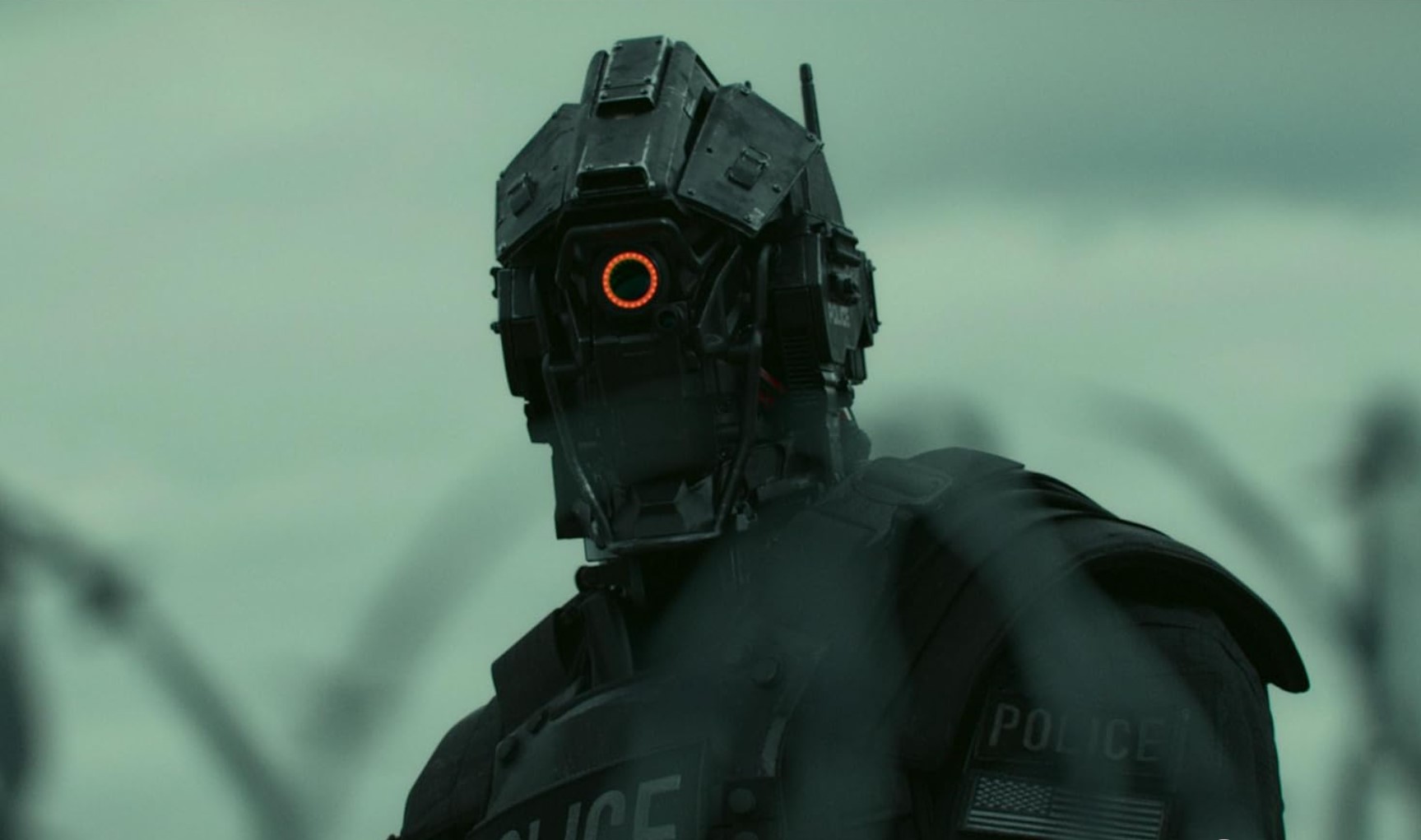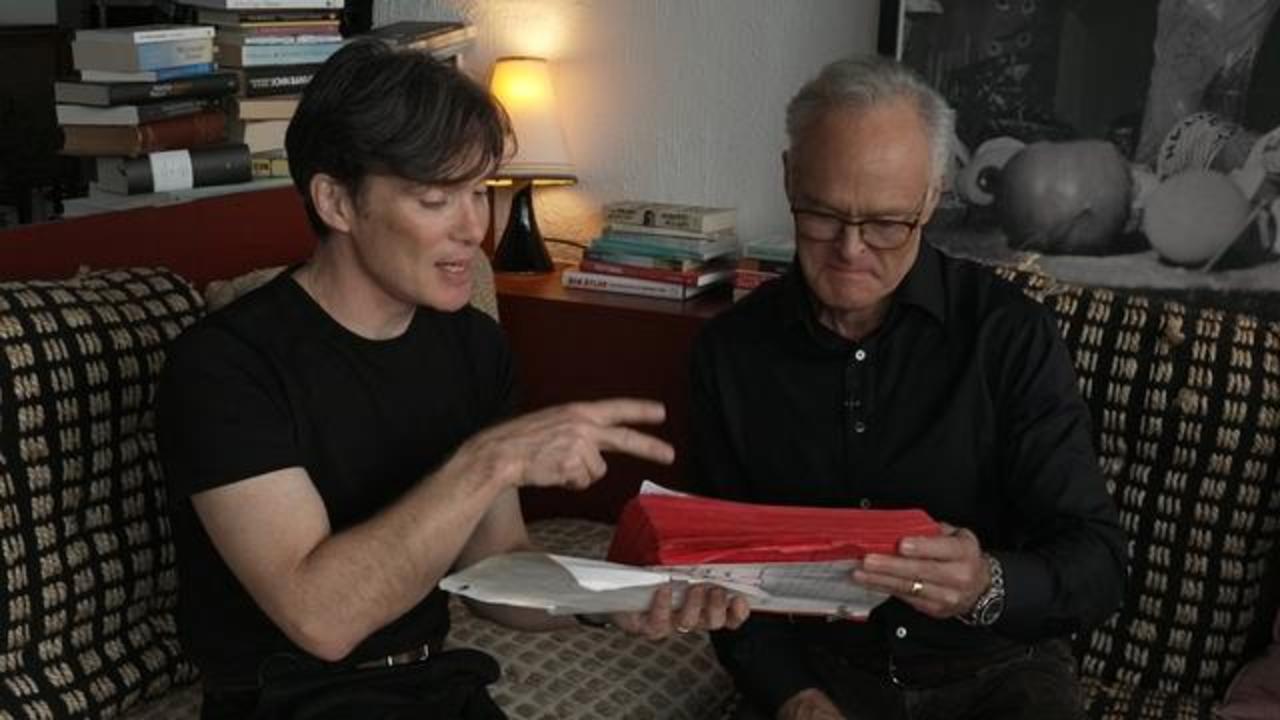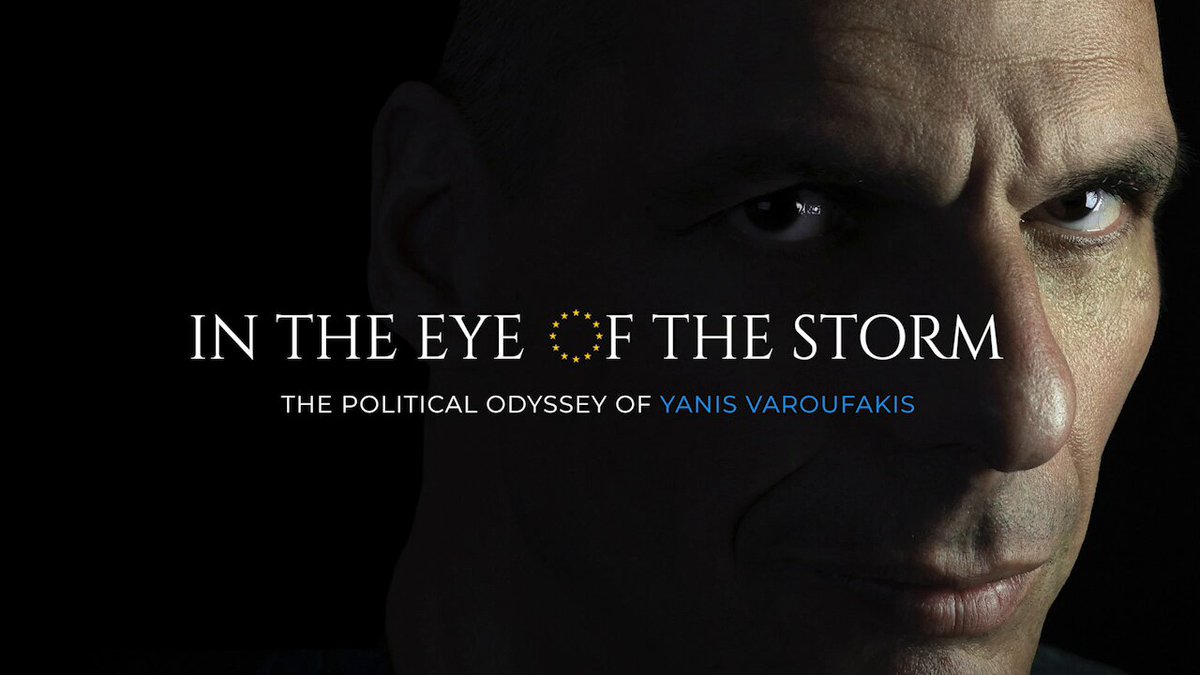by Bob Martin
Vistas of unearthly beauty. . .
A creature of inescapable terror. . .
It’s SF cinema’s first outer space gothic thriller
In some distant region of uncharted space, the battered starship Nostromo carries seven astronauts, five men and two women, on a commercial voyage. They are independent prospectors—traveling from planet to planet, extracting oil and precious minerals from each, refining and storing their finds in the massive refinery and storage complex that the Nostromo carries in tow. Much of their time is spent in “hypersleep,” a type of suspended animation, as they traverse the vast distances that separate each planetfall. Now their extended slumber is interrupted as the ship’s computer receives a distress signal from a planet in their galactic vicinity. The ship’s crew investigates the call and, in so doing, en-counters an extraterrestrial horror… the Alien.
That’s as much as 20th Century-Fox will officially reveal of the plot of Alien, their first major science-fiction film since Star Wars. It is slated for release this May 25- two years to the day after the initial release of George Lucas’ blockbuster.
DespiteFox’s “conspiracy of silence” regarding the nature and appearance of the alien, enough information has filtered through the celluloid curtain to suggest that it will be one of the strangest creatures ever seen on film. Rumors say that it changes shape throughout the picture. Veronica Cartwright, who plays Navigator Lambert (and was last seen as Nancy Bellicec in the remake of Invasion of the Body Snatchers,) describes it as a parasite that chooses Executive Officer Kane (played by British actor John Hurt) as its host.
H. R. Giger, the Swiss surrealist artist who designed the beast, the ancient landscapes of its planet and an equally ancient alien spacecraft, says of the alien, “It is elegant, fast and terrible. It exists to destroy —and destroys to exist. Once seen, it will never be forgotten. It will remain with people who have seen it, perhaps in their dreams or nightmares, for a long, long time. Perhaps for all time. I even dream about the alien myself—so much that I’m often frightened of going to sleep.” Before Giger’s awesome statements can be dis; missed as exaggeration, it would be wise to view his previous work. His paintings, as collected in a book called Giger’s Necronomicon, are eerily overpowering—jarring juxtapositions of bone, flesh and machinery in intricate designs of cold, unearthly beauty.
Dan O’Bannon, the screenwriter who conceived the creature, is especially cautious when discussing the alien.
“Frankly,” says O’Bannon, “I think Fox is doing the right thing by playing their cards so close to the vest with this. People are going to pay their $4.50, come in, sit down and say ‘Show me’—and boy, are we gonna show them!
“I will tell you this, though—it is scary. In fact, Fox is planning previews in several cities to determine if it’s too scary, before they make the final cut.
“But I really hope they don’t get cold feet and water it down. I grew up on all the horror movies and scary books there were and, with Alien, I just wanted to see how frightening I could make something, without a lot of violence and gore. What’s weird is that when Fox read the script, they said, ‘Eh! That’s not scary.’ While we were making the picture, it was, ‘Eh, still not scary.’ When it was all put together, they said it was too scary.”
O’Bannon objects to treating Alien as another Star Wars. “They both cost millions of dollars and they both have spaceships. That’s where the similarity ends. I was hoping to do this with the normal screen size and with normal sound. Fox decided to go 70mm with Dolby sound. I think eventually audiences are going to get tired of being pounded down into their seats by the sound track.
“But this is not another ‘special-effects movie.’ We do have quite a few effects. But in pictures like Star Wars and Superman, every three minutes you’re shown another marvel and you say to yourself, ‘Oh, wow, special effect,’ and I think that’s great for films like that, but not for Alien. Nothing should detract from the ‘reality’ of it once the basic premise is accepted. That would blow the suspense.
“Fox did see a lot of similarity between Alien and Star Wars, and between Alien and The Omen. They picked it up in the first place because they figured they could tap two hot markets. A lot of people thought John Williams should write the score. The director, Ridley Scott, and I wanted a Japanese composer named Tomita. I understand that Jerry Goldsmith is doing the music now.
“Probably the reason Fox didn’t get Tomita is their reluctance to deal with folks who are not ‘movie people.’ I had the same difficulty convincing Fox to get Giger to design the alien.
“It was early in preproduction, and Fox was having difficulty finding a director, after refusing to consider me. I had worked with Giger on the Alejandro Jodorowsky production of Dune and wanted him for Alien but couldn’t convince Fox. Finally, when they got Ridley to direct, I showed him some of Giger’s work, and Ridley convinced Fox to approach him.
“I have to really credit Ridley with saving the film at that early stage. Things had gone on so long without direction, that every-thing had started to stagnate. He really came in and pulled everything together— literally pulled it out of the ashcan. He took all the preproduction work we had done and retextured it to suit his own visual style. As you can see in his feature, The Duelists, visual style is very important in his work.
“When Giger did come in, he was a dream to work with. He’s not at all the crazy person you might expect from seeing his work. After we decided on the look we wanted for the alien, he did a full painting. He works on huge canvasses and gets all that fine detail working entirely in airbrush. After painting the alien, he then sculpted it, and his sculpture was used to cast the molds for the film’s creature.”
O’Bannon is particularly concerned about the credit due the crew of fantasy artists he assembled to work on the design of the film. He suspects that their work might be neglected in the shadows of art directors Les Dilley and Roger Christian and costume designer John Mollo. All three of these gentlemen were awarded Oscars for their contributions to Star Wars.
“Chris Foss, a British fantasy artist, and Ron Cobb designed all the Earth hardware. The incredible spacesuits were designed by Jean Giraud, a French artist whose work is published under the name Moebius. I hear that Giger and Cobb are being credited as ‘concept artists,’ which really doesn’t suggest the amount of design work they did, while Giraud and Foss are receiving an even lesser billing.”
Another credit problem involves the screenplay itself. O’Bannon’s original script, co-written with executive producer Ron Shussett, was re-worked by Walter Hill, one of the film’s co-producers, best known for his controversial film, The Warriors. The official journal of the American Film Institute subsequently published an article suggesting that Hill, more than O’Bannon, was responsible for the professionalism, suspense and tightness of the shooting script. O’Bannon felt the article’s statements to be a “personal insult” and informed STARLOG that the writing credits for Alien are under review by the Writer’s Guild to determine whether Hill’s name should be removed from the credits. If that happens, O’Bannon and Shussett will be the film’s sole authors.
“Hill’s contribution was largely characterization, and he put the script into his own format,” says O’Bannon. “He also added a lot of the four-letter dialogue, which I think, in a film like Alien, is a distraction. It takes away from the suspense. Fortunately, most of that was dropped .
“My script was professional and tight— the suspense was there. I’ve spent all the years since my first feature, Dark Star, studying how to write good suspense into a script. And I’m writing a novel now that will demonstrate what I’ve learned.”
Despite his expressed disenchantment with the “Hollywood system” in general and Fox in particular, O’Bannon is looking forward expectantly to the film’s May 25 debut.
“When this started in 1975, I was really at a low point,” O’Bannon says. “John Carpenter and I had both poured our life’s blood into Dark Star and had pinned a lot of hopes on it. When it did get into release, most of the credit for the film went to John as the director. [O’Bannon directed the SFX, starred and co-wrote the script for Dark Star.] Then there was the Dune project, which would have been an incredible film. I was to direct the special effects. After $2 million was spent on preproduction, the backers backed off and the money ran out. I wound up in L.A., penniless. Ron Shussett was the only person who would give me a place to stay. The first day I showed up on his doorstep, he said to me, ‘Dan, I think we’re going to do something great together—I can feel it.’ A few weeks later we were reworking an old script of mine called Star-Beast, retitled Alien. It’s great to see it all come true after four years of struggle.”
Largely due to O’Bannon’s influence, Alien promises to be light-years removed from the cinematic fantasies offered by Star Wars, Close Encounters of the Third Kind and Superman. Without detracting from the magnificent achievements of those films, SF fans hope that Alien will prove that serious speculation on the unexplored beauty and horror of the cosmos can be an equally spellbinding experience.
The “Nostromo”
The hardware marvel of Alien is the Nostromo, the film’s mile-long starship. Most of its length is due to the massive oil refinery and mineral storage complex which it hauls. The interior sets for the ship are based on designs by Ron Cobb, one of the key production artists from Star Wars. Production designer Michael Seymour speaks with particular pride when describing the production crew’s work on these sets.
“We started by building model sets, then an actual section of the corridor, part of the operational bridge,” says Seymour. “After further discussions, we began building the sets in earnest.”
The ship consists of three levels—the bottom two are the maintenance and engineering levels. The top or “A” level holds the living and usual work quarters of the ship’s seven-member crew, consisting of the starship bridge, mess hall, infirmary, hypersleep area, computer room and other typical spacecraft facilities. Seymour states that the sets are built with actual corridors connecting each of the “A” level sets, “thus giving both the actors and the audience the feeling of being inside a vast starship—both huge and claustrophobic at one and the same time. We want people to have the impression that it’s a real place, that it’s more science fact than science fiction, and also that the whole place is well used, lived in and slightly battered after years of service.”
The most elaborate of the Nostromo interior sets is the bridge, which is largely constructed of parts from aircraft, automobiles, radios and television sets. “We must have spent thousands of [British] pounds on scrap from old jet-aircraft engines particularly,” says co-art director Dilley, “and it’s paid off handsomely because of its authentic look.” To add to the authenticity, each of the set’s hundreds of dials, switches and buttons has a genuine function. Some start hundreds of lights flashing, others open doors or ring alarms, while still others control the 40 television screens positioned about the bridge set. For the film, these screens, ranging in size from five to 22 inches, were fed computer readouts, maps, space vistas and other videotaped graphics from an intricate console commanded by video coordinator Dick Hewitt.
As principal shooting progressed at Shepperton Studios in England, the six months of special-effects work began at Bray Studios in Windsor, formerly the home of Hammer Films. Over $3 million were invested in the effects, which were supervised by Brian Johnson and directed by Nick Allder—best known for their SFX work on Space:1999. The major task for the crew was in simulating the flight of the massive Nostromo and its factory complex. The main section of the ship, said to be 800 feet long, is represented in most shots by an eight-foot model.
Instead of the blue-screen process which is used in most of the recent SF blockbusters, rotoscoping is used, a process involving frame-by-frame, hand-painted action. Advance reports suggest excellent results, including one long tracking shot which seems to zoom past myriad stars and planets, to close in on a full-length starship. The shot continues to angle in until crew members are visible through the port of the model ship.
Star Wars fans will be paying extra attention to the quality of Johnson’s SFX work on this big-budgeted feature, since he’s already begun his next project, The Empire Strikes Back.
Starlog, n. 23, June 1979




